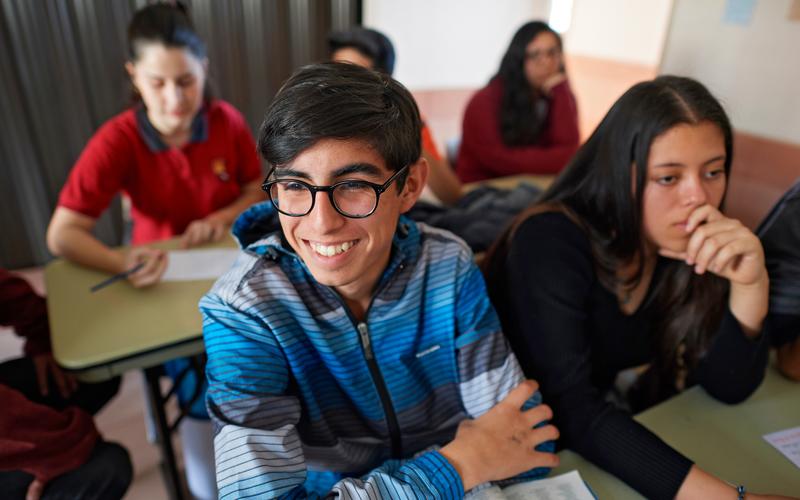Making Accommodations for Students with Disabilities or Other Life Challenges

Providing accommodations to students with disabilities or other life challenges helps them to access and achieve the same learning outcomes as students without these challenges. Knowing how to best accommodate student learning begins with teachers knowing their students, “The better you know a person, the better able you are to help him or her find personal meaning and power in the gospel of Jesus Christ” (Love Those You Teach, Teaching in the Savior’s Way).
Teachers should consider the following guidelines when making accommodations for students:
Identify the Student's Needs
As teachers consider the learning and accommodation needs of their students, they may ask themselves:
Do I know which of my students struggle with…
- Reading?
- Memory or cognitive issues?
- Learning and using a second language?
- Hearing or vision?
- Physical mobility?
- Focusing or hyperactivity?
- Social skills?
- Health issues that impact learning or attendance?
- Anxiety, depression, or other mental health challenges (Mental Health, Life Help, Gospel Library)?
- Other family or life challenges (see Life Help, Gospel Library)?
Have I spoken with the student and their parents or guardians about accommodations that are helpful at home or school?
Plan for the Student's Needs
Once the need is identified, teachers should make a plan that appropriately accommodates the student’s needs. Teachers may ask themselves, “How can I help this student learn this principle in a way that is accessible to them and meets their learning needs?” The following sections provide guidance for teachers as they consider accommodations for students striving to fulfill seminary requirements:
1. Attendance Requirements: Due to disability, health concerns, or other life challenges, some students may not be able to meet attendance requirements. Accommodations for these students may vary and are determined by individual teachers. In consultation with students and their parents or guardians, makeup work strategies for attendance can and should be individualized for each student.
2. Reading Requirements: For students with reading disabilities or visual impairments, access to required readings may be provided in alternative ways, including but not limited to:
- Listening to audio versions of the required readings.
- Using text to speech programs online (many are free).
- Allowing students to read with peers, teachers, family members, or Church leaders.
- Providing large print text or Braille.
- Using the Scripture Stories resources to watch, read, or listen to simplified scripture stories online.
- Using the illustrated scripture books found at the Church distribution center.
- Watching the Church-produced "Scriptural Reenactments and Teaching" videos.
- Listening to the Church-produced audio series.
3. Assessment Requirements: Teachers should strive to provide assessment accommodations that will help students with disabilities or other life challenges participate on an equal basis with other students. Accommodations could include:
- Allowing verbal responses when written responses are a challenge.
- Allowing sufficient processing time before students respond.
- Allowing for assessment delivery and responses to be communicated in different ways (orally, visually, and so on).
- Providing a field of choices for responses.
- For students with limited verbal ability, allow gestures, eye gaze, or pointing to responses.
Implement the Plan
Teachers can help limit barriers to learning by considering:
- How information is presented (lecture, reading, pictures, video, audio, peer support, and so on).
- How students respond (verbally, written, visually, with a peer, in their mind, and so on).
- The learning environment or setting (lighting, seating arrangement, noise level, and so on).
- The timing of instruction (additional processing time, breaks, extra time for tests or projects, and so on).
The following additional resources may be helpful for teachers as they provide accommodations for students with disabilities and other life challenges.
- Disabilities Resources, Life Help, Gospel Library
- Teaching Strategies for Children with Disabilities, Gospel Library
- “How can I help class members feel included?,” Disability Services: Leaders, Gospel Library
- Life Help, Gospel Library
- Mental Health, Life Help, Gospel Library
- “Outside Resources,” Disability Services: Resources, Gospel Library
- “Food Allergies,” Disability Services: Leaders, Gospel Library
- “Service Animals,” Disability Services: Leaders, Gospel Library
- General Handbook: Serving in The Church of Jesus Christ of Latter-day Saints, 38.8.27, Gospel Library